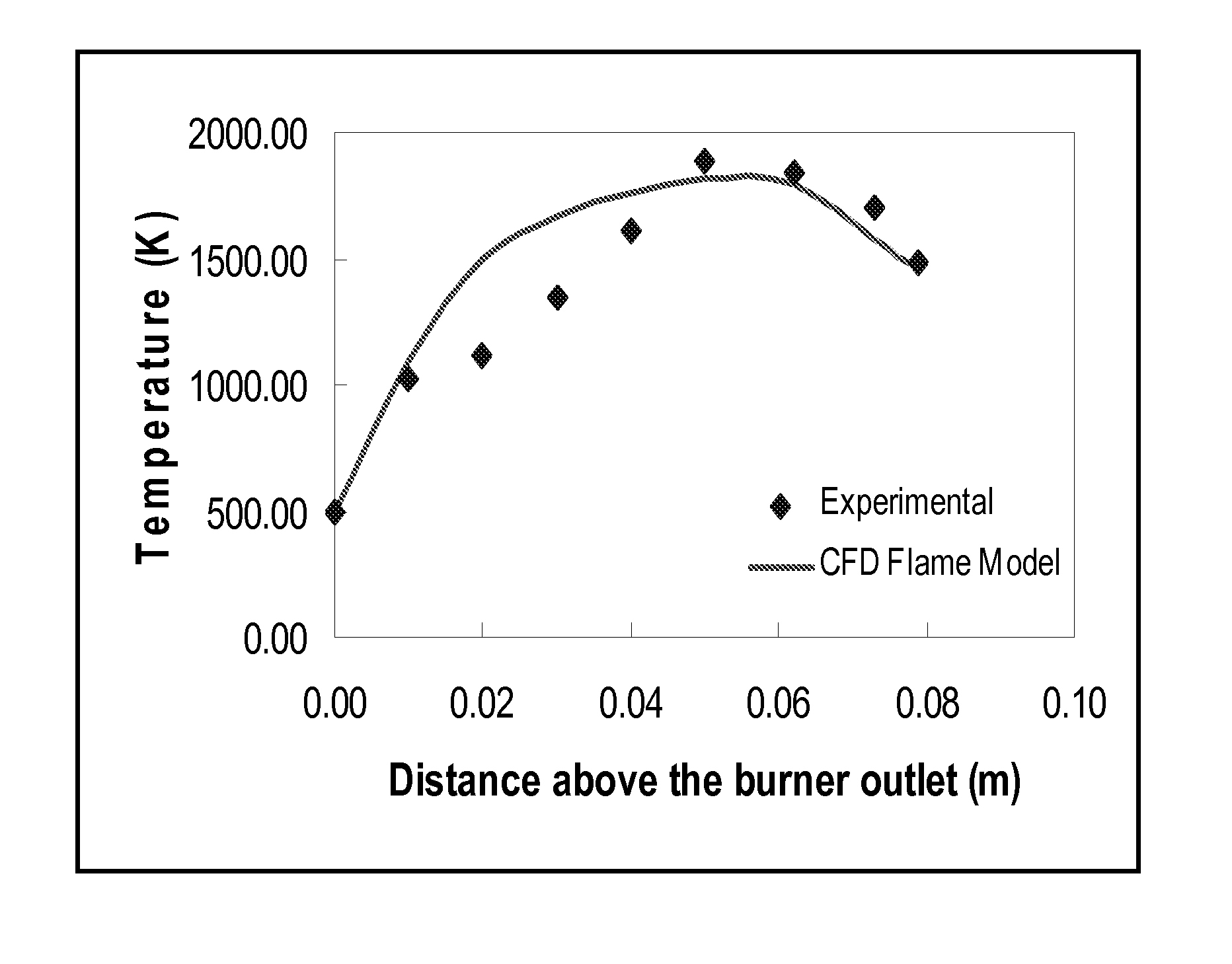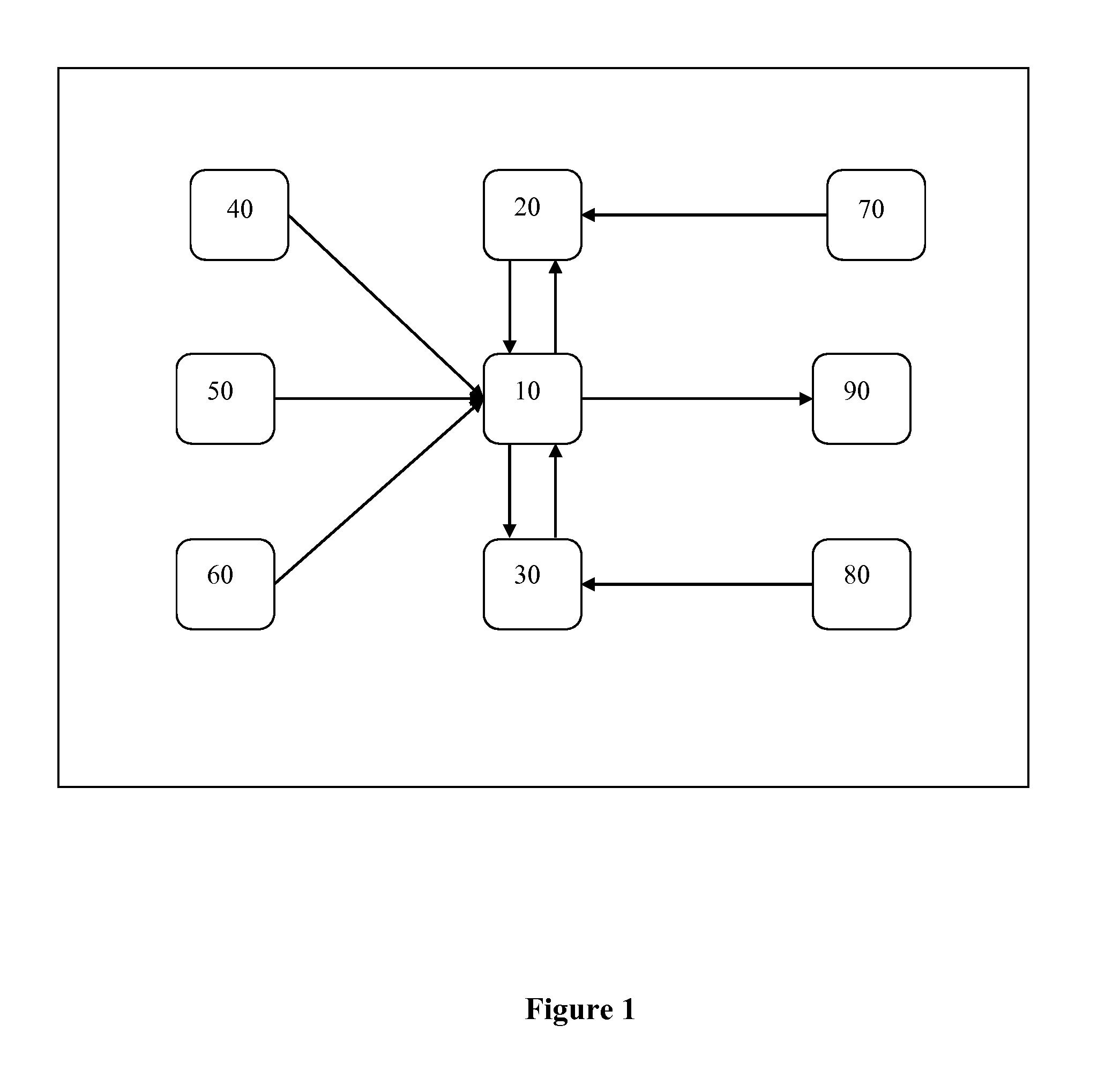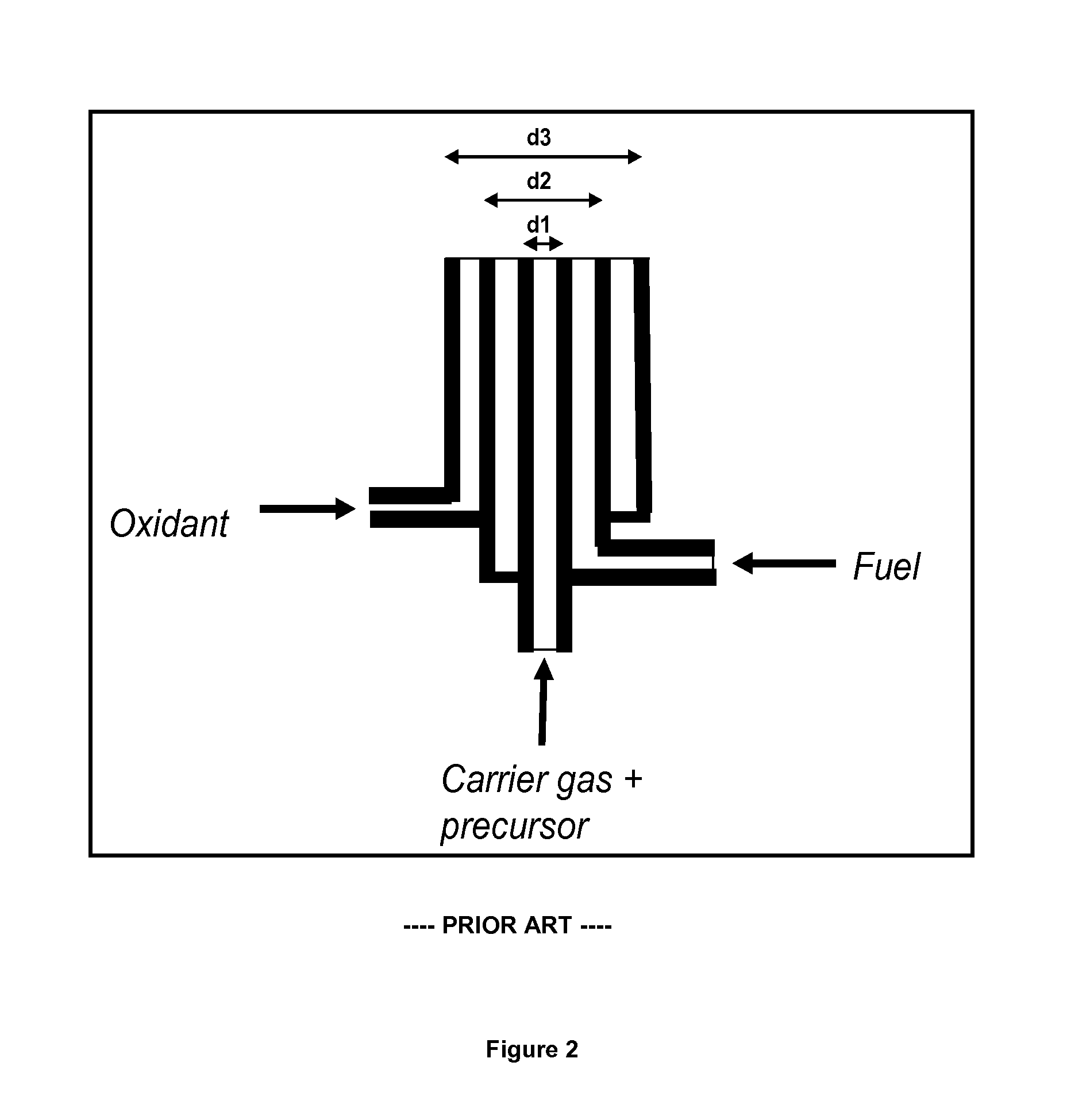System for optimizing and controlling particle size distribution and for scale-up of nanoparticle production in an aerosol flame reactor
a technology of aerosol flame reactor and particle size distribution, which is applied in the field of system and method for optimizing and controlling the particle size distribution and the scale-up of nanoparticle production in aerosol flame reactor, can solve the problems of not addressing the challenge aspect of 446 patent, irregular structure of particles and particle distribution, and inability to disclose the optimization method, etc., to achieve less experimentation, less time, and less experimentation
- Summary
- Abstract
- Description
- Claims
- Application Information
AI Technical Summary
Benefits of technology
Problems solved by technology
Method used
Image
Examples
example 1
[0128]FIG. 4 shows the temperature contours and the value of the alumina aggregate particle size inside the flame reactor with burner configuration B (Flame B) of FIG. 3, wherein methane in the input stream is fed to the burner through the third tube; air in the second tube and precursor and carrier gas in the first tube.
[0129]The configuration of input streams (methane, air, carrier gas and precursor) to the burner has a strong influence on the flame characteristics and hence on the particle size. The influence of burner configuration and arrangement of the burner configurations on flame temperature profile is shown in FIG. 4.
[0130]The flames in configuration B (FIG. 4) are shorter flames surrounded by air on both sides and hence, yield a more efficient combustion.
example 2
[0131]FIG. 5 shows the temperature contours and the value of the alumina aggregate particle size inside the flame reactor with burner configuration C (Flame C) of FIG. 3, wherein methane in the input stream is fed to the burner through the second tube; air in the third tube and precursor and carrier gas in the first tube.
[0132]The configuration of input streams to the burner has a strong influence on the flame characteristics and hence on the particle size. The influence of burner configuration on flame temperature profile is shown in FIG. 5.
[0133]The configuration B (flame B) has methane in the third tube and air in the second tube where as configuration C has methane in the second tube and air in the third tube. This difference in arrangement alters the flame shape and size drastically as seen in the FIGS. 4 and 5.
[0134]The flames in configuration B (FIG. 4) are surrounded by air on both sides and hence, yield a more efficient combustion than those in configuration C.
[0135]For thi...
example 3
[0136]FIG. 6 illustrates the comparison of axial temperature profile in a laboratory scale flame reactor determined by simulation tool of the present invention with the experimental data of Johanessen et al (T. Johannessen, S. E. Pratsinis and H. Livbjerg, Computational fluid-particle dynamics for the flame synthesis of alumina particles, Chemical Engineering Science, 55, 177-191 (2000)).
[0137]FIG. 6 compares the data determined by the simulation tool with programmed instructions for the axial temperature profile and influence of distance above burner outlet (m) on the mean particle size with that of published experimental data of Johanessen et al (2000).
[0138]Further, Table 1 below provides and compares the simulated data determined by the simulation tool with programmed instructions for the axial temperature profile and influence of distance above burner outlet (m) on the mean particle size with that of published experimental data of Johanessen et al (2000).
[0139]
TABLE 1Distance a...
PUM
| Property | Measurement | Unit |
|---|---|---|
| size | aaaaa | aaaaa |
| inner diameter | aaaaa | aaaaa |
| inner diameter | aaaaa | aaaaa |
Abstract
Description
Claims
Application Information
 Login to View More
Login to View More - R&D
- Intellectual Property
- Life Sciences
- Materials
- Tech Scout
- Unparalleled Data Quality
- Higher Quality Content
- 60% Fewer Hallucinations
Browse by: Latest US Patents, China's latest patents, Technical Efficacy Thesaurus, Application Domain, Technology Topic, Popular Technical Reports.
© 2025 PatSnap. All rights reserved.Legal|Privacy policy|Modern Slavery Act Transparency Statement|Sitemap|About US| Contact US: help@patsnap.com



